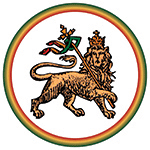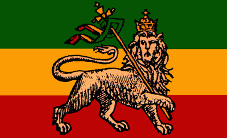The Autobiography of Emperor Haile Sellassie I
CHAPTER 27
About Our arrangements for the appointment of bishops chosen from among the savants of Ethiopia
It does not appear to Us likely that anyone doubts that Ethiopia-besides being a very large country-has lived steadfast in her Christianity from the 4th century up to the present time, some 1600 years. In any event, one can be easily convinced of this fact by reading Ethiopia's history.
But when Ethiopia accepted Christianity, the seat of government and the principal city of the realm were at Aksum; consequently, it was to that province of Aksum that one bishop only was appointed by the Archbishop who was the incumbent of the See of St. Mark at Alexandria. When he died, another would be substituted, but never were there appointed several bishops in accordance with the size of the country.
Recently, in 1864 (= 1872), during the reign of Emperor Yohannes, four Coptic (i.e. Egyptian) bishops had been appointed and eventually arrived in 1873 (= 1880/1). The reason was that Emperor Yohannes, having enthroned King Menelik over Shoa and King Takla Haymanot over Gojjam, had intended to install his son, Ras Araya, as King of Bagemeder. He was then to retain one bishop for himself for the Tigre province and to distribute three bishops to the three Kings. But the fourth bishop died before reaching Aksum, while Ras Araya died before becoming King; so the Emperor divided Ethiopia into three dioceses and assigned them to each of the three bishops. Thus the clergy were relieved of a tiring journey to a distant province, where the one single bishop resided, in order to receive ordination as priest or deacon. When two of these three bishops died and were not replaced by others, there only remained Abuna Mattewos for the whole of Ethiopia; and as his residence was in the capital Addis Ababa, members of the clergy, who came from the various provinces of Ethiopia to receive the office of priest or deacon, encountered great inconvenience and lived in a state of some turmoil.
As We were aware of the great difficulties encountered by members of the clergy in this matter, We set down this Our opinion in writing, with proper documentary support, to say that bishops should be appointed from among the savants of the country, to tour their dioceses preaching and conferring the priesthood and deaconship. This was despatched, with the seal of Empress Zawditu and my own, to the Orthodox Patriarch, Abuna Yohannes, at Alexandria.
After Abuna Yohannes had examined the matter with his lucid mind, he was convinced that this was a proper request and consequently sent to Us the following reply: 'If you choose five from among the Ethiopian savants and send them to us, it is our intention to appoint them as bishops. We shall, however, additionally despatch a Coptic (Egyptian) bishop who shall be primus among the Ethiopian bishops, and may you please appreciate this.'
When We informed the princes, nobles, doctors, and savants of this, the majority received the matter with joy. But some members of the clergy, although unable to oppose Our view openly, did not stop trying. This was not because they had investigated the matter thoroughly and understood it but it arose from their subjugation to custom. However, in the course of time We succeeded in convincing them that it would confer great honour upon the church of Ethiopia if this proposal were carried out. They therefore informed Us that they had changed their previous view and assured Us of the acceptance of Our plan.
Subsequently Mamher Dasta, Mamher Hayla Maryam, Mamher Walda Kidan, and Mamher Hayla Mika'el were selected and We arranged for them to go to Egypt in the month of Genbot 1921 (= May/June 1929).
Meanwhile, the Patriarch, Abuna Yohannes, was waiting, having selected Abuna Qerillos, from among the monks of the monastery of Asqetis, whom he was sending as head of the Ethiopian bishops; and as soon as the Ethiopian savants reached Cairo, he immediately and without delay appointed the five of them together as bishops, i.e. on 25th Genbot (= 2nd June).
He (the Patriarch) assigned to them the following names: Mamher Dasta to be Abuna Abreham, Mamher Hayla Maryam to be Abuna Petros, Mamher Walda Kidan to be Abuna Yeshaq, Mamher Hayla Mika'el to be Abuna Mika'el.
Abuna Petros was the bishop who died in martyrdom at the hands of the Italians when he was captured, in Hamle 1928 (= July 1936), preaching about Ethiopia's freedom. Abuna Mika'el was battered to a martyr's death, at the hands of the enemy, in the town of Gore.
After the bishops had been appointed to their episcopal office, they returned to Ethiopia together with the Archbishop, Abuna Qerillos. Since We were convinced that this was an unprecedented event in Ethiopia, glorifying the Ethiopian Church, We arranged that, upon their arrival at Addis Ababa, the princes and nobles, doctors and savants as well as the priests of the various churches should assemble en masse. Cannons were fired and a ceremonial welcome was held in their honour.
Thereupon, because We meant them to begin their work of education by touring their respective dioceses, We made the following dispositions:
The diocese of Archbishop Abuna Qerillos is to include the whole of Shoa, the districts surrounding Addis Ababa, and added to this Harar and Arussi.
For Abuna Abreham, Gojjam and Bagemeder.
For Abuna Yeshaq, Tigre, Lasta and Wag and all the surrounding districts.
For Abuna Petros, the entire provinces of Wallo and Yajju.
For Abuna Mika'el, the areas called Kaffa, Ilubabor, Wallaga, and the whole of western Ethiopia. The man who had been selected to be the sixth bishop was Etchage Gabra Manfas Qeddus of Dabra Libanos. But as it had been permanently inconvenient for him to travel to Egypt with the savants, it was his good fortune that later on, in Tahsas 1922 (= December-January 1929-30), the Patriarch, Abuna Yohannes, came to Addis Ababa to visit his children in the faith and immediately bestowed the rank of bishop upon Etchage Gabra Manfas Qeddus and named him Abuna Sawiros. We assigned to him as his diocese the whole of southern Ethiopia.
It is wonderful that at this time God in his charity wrought two great works of good fortune for the Ethiopian Church:
(1) The appointment of men, chosen from among Ethiopia's own savants, to the office of bishop-something that had never happened in some 1600 years, from the time Ethiopia accepted Christianity in the fourth century up to the present.
(2) The journey to Addis Ababa of the Patriarch, Abuna Yohannes, his celebrating mass in an Ethiopian church and his blessing of the people, while at the same time appointing the Etchage of Dabra Libanos to the dignity of a bishop.
Electronic edition created and published online by members of the
Emperor Haile Sellassie First Theocracy Reign
Order of the Nyahbinghi

January 21, 2017
